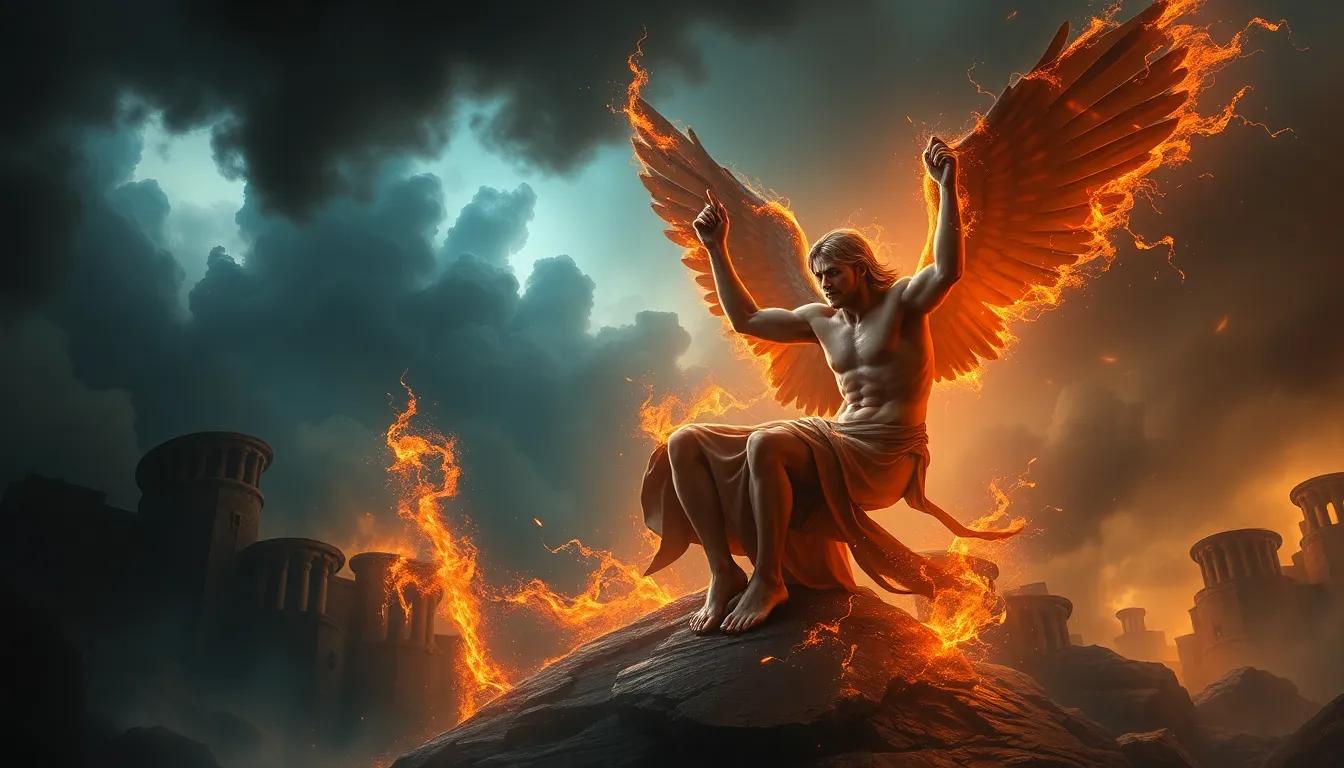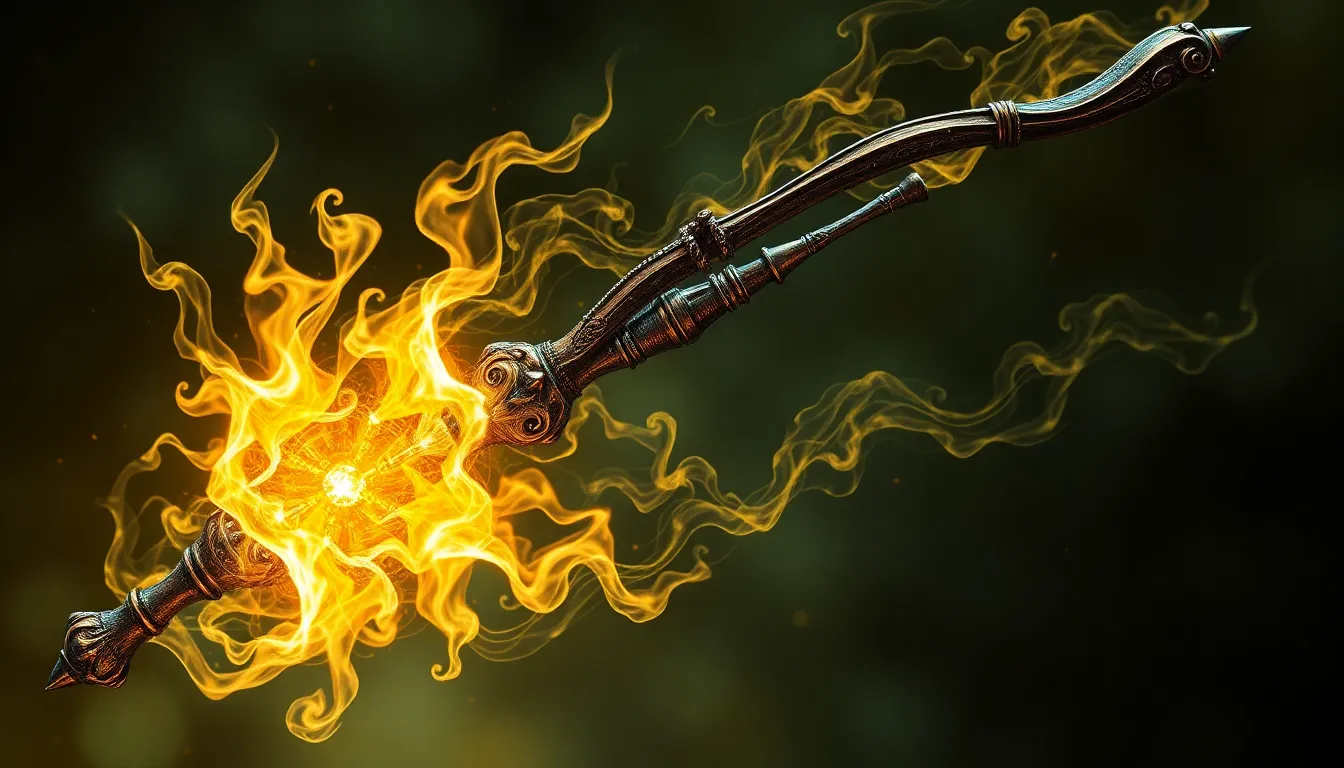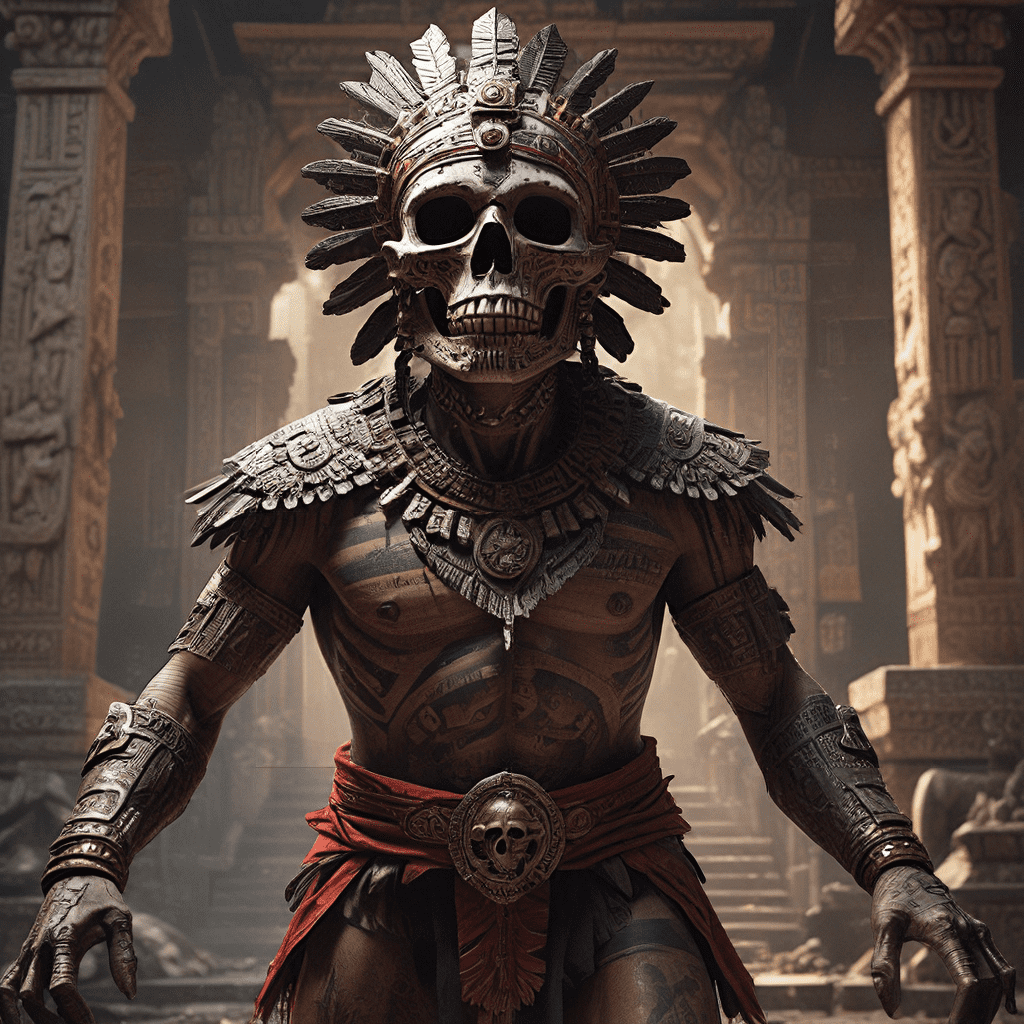Fallen from Grace: The Most Dramatic Divine Punishments in Mythology
I. Introduction
Divine punishment in mythology refers to the actions taken by gods or supernatural forces to correct or punish mortals who have violated divine laws or moral codes. These punishments often serve as cautionary tales, highlighting the consequences of hubris, disobedience, or moral failures.
The concept of “fallen from grace” embodies the idea of a once-revered individual or entity who has lost favor with the divine due to their transgressions. This theme resonates across various cultures and epochs, illustrating the universal human experience of facing repercussions for one’s actions.
Understanding these myths offers valuable insights into the cultural values and beliefs of different societies, shedding light on how they interpret morality, justice, and the relationship between humans and the divine.
II. The Concept of Hubris and Its Consequences
Hubris, a term originating from ancient Greek, signifies excessive pride or self-confidence, often leading individuals to defy the gods or the natural order. In mythology, hubris is frequently portrayed as a grave sin, triggering a chain of events that culminates in divine punishment.
Common consequences of hubris include:
- Loss of status or power
- Physical transformation or mutilation
- Death or destruction of family
- Isolation or madness
These themes illustrate how pride can lead to a fall, serving as a reminder of the limits of human ability and the importance of humility.
III. Greek Mythology: The Wrath of the Olympians
Greek mythology is rich with tales of divine punishment, particularly from the vengeful Olympian gods. These stories often feature protagonists who, due to their hubris, attract the ire of the gods.
A. Case Study: Arachne – The Weaver Punished
Arachne, a talented mortal weaver, boasted that her skills surpassed those of Athena, the goddess of wisdom and crafts. In response, Athena challenged Arachne to a weaving contest. While Arachne’s work was exquisite, it depicted the gods in unflattering ways. Enraged, Athena destroyed Arachne’s tapestry and turned her into a spider, condemning her to weave for eternity.
B. Case Study: Niobe – The Mother of Tragedy
Niobe, the queen of Thebes, boasted about her fourteen children, claiming superiority over Leto, who had only two. In retaliation, Apollo and Artemis killed all of Niobe’s children, leading her to a life of grief and despair, ultimately turning her into stone, where she would weep eternally.
C. Case Study: King Midas – The Golden Touch
King Midas wished for everything he touched to turn to gold. Initially thrilled with his newfound power, he soon realized the tragic consequences when he could not eat or drink, as even food turned to gold. His hubris led him to plead with Dionysus to reverse the wish, teaching him that greed and excessive desire can lead to one’s downfall.
IV. Norse Mythology: The Fall of the Gods
Norse mythology presents a complex tapestry of divine interactions, where the gods themselves are not immune to hubris and its consequences.
A. Case Study: Loki – The Trickster’s Downfall
Loki, the trickster god, often used his cunning to outsmart the other gods, which ultimately led to his downfall. After orchestrating the death of the beloved god Balder, Loki faced the wrath of the other gods, who captured him and bound him in a cave, a punishment that exemplifies the dire consequences of betrayal.
B. The Role of Fate in Divine Punishment
In Norse belief, the concept of fate plays a significant role in divine punishment. The Norns, who weave the fate of all beings, signify that even the gods are subject to cosmic laws, reinforcing the idea that hubris can lead to inevitable downfall.
C. The Concept of Ragnarok as Ultimate Punishment
Ragnarok, the foretold apocalypse in Norse mythology, represents the ultimate divine punishment, not only for the gods but for all beings. It is a time of great destruction that serves as a cosmic reset, illustrating the consequences of divine and mortal hubris alike.
V. Hindu Mythology: Divine Retribution and Dharma
Hindu mythology emphasizes the concepts of dharma (righteousness) and adharma (unrighteousness), where divine punishment often serves to restore balance and order.
A. Case Study: Ravana – The King Who Defied the Gods
Ravana, the ten-headed king of Lanka, kidnapped Sita, the wife of Lord Rama, defying divine law. His actions led to a great war, resulting in his ultimate defeat and death at the hands of Rama, symbolizing the victory of dharma over adharma.
B. The Significance of Dharma and Adharma
The dichotomy of dharma and adharma illustrates the moral framework within Hindu mythology, where divine punishment is viewed as a necessary measure to uphold cosmic order.
C. The Consequence of Divine Punishment in the Epic Tales of the Ramayana
In the epic Ramayana, divine punishment is depicted as a means of restoring balance and justice. Characters who stray from their dharma face severe repercussions, reinforcing the importance of righteous conduct.
VI. Egyptian Mythology: The Balance of Ma’at
In Egyptian mythology, the concept of Ma’at represents truth, balance, and cosmic order. Divine punishment is often portrayed as a means to restore Ma’at when it is disrupted.
A. Case Study: Set and Osiris – The Duel of Brothers
Set, the god of chaos, murdered his brother Osiris, leading to a struggle for power. Osiris was resurrected by his wife Isis, and their son Horus ultimately avenged his father’s death by defeating Set, restoring balance to the cosmos.
B. The Significance of Ma’at in Maintaining Cosmic Order
Ma’at is central to Egyptian belief, as it governs the actions of both gods and mortals. Divine punishment serves to maintain this balance, with the gods acting as enforcers of Ma’at.
C. Divine Punishment as a Restoration of Balance
In Egyptian thought, the restoration of balance through divine punishment serves as a reminder of the consequences of chaos and disorder, emphasizing the need for harmony in both celestial and terrestrial realms.
VII. Mesopotamian Myths: The Enuma Elish and Divine Order
Mesopotamian mythology, particularly the Enuma Elish, outlines the creation of the world and the establishment of divine law, where defiance against the gods leads to punishment.
A. The Creation Myth and the Establishment of Divine Law
The Enuma Elish narrates the rise of Marduk as the chief god, who defeats the primordial chaos represented by Tiamat. This victory establishes order and law, setting the stage for divine authority.
B. Case Study: Tiamat – The Mother of Monsters
Tiamat, representing chaos and disorder, defied the younger gods, leading to her defeat by Marduk. Her demise is symbolic of the consequences faced by those who oppose divine will.
C. The Consequences of Defiance Against the Gods
In Mesopotamian myths, defiance against the gods often results in catastrophic outcomes, underscoring the importance of obedience and respect for divine authority.
VIII. Indigenous Mythologies: Nature’s Wrath as Divine Punishment
Many indigenous cultures view divine punishment as a reflection of nature’s wrath, where environmental disasters serve as manifestations of displeasure from the gods.
A. Overview of Various Indigenous Beliefs
Indigenous mythologies often emphasize the interconnectedness of humanity and nature, where moral transgressions can lead to disruptions in the natural order, eliciting divine retribution.
B. Case Study: The Punishment of Prometheus in Native American Lore
In some Native American traditions, Prometheus is punished by the gods for giving fire to humanity. His suffering serves as a cautionary tale regarding the consequences of defying divine authority and the responsibilities that come with knowledge.
C. Environmental Disasters as Manifestations of Divine Displeasure</



